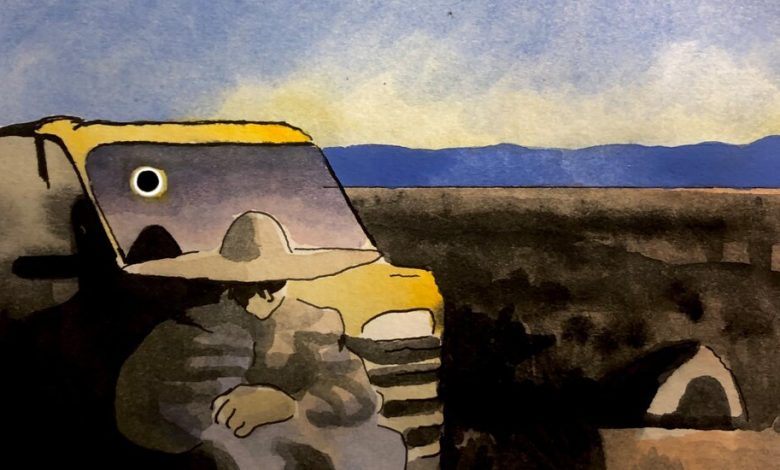You Don’t Just See a Total Solar Eclipse. You Feel It Completely.

Almost one year ago, in the middle of the night, I drove from my hometown, Belfast, Northern Ireland, to Dublin to catch an early morning flight to Munich. From there I caught another plane to Bangkok, another to Singapore and yet another to Perth in Western Australia. There, I rented a camper van and began a drive of more than 750 miles north to the town of Exmouth on a remote peninsula on the northwest coast of the continent.
This was the only reasonably accessible location on the planet with decent weather prospects from which to view the total solar eclipse on April 20, 2023. The entire event lasted 62 seconds. It was the 10th total solar eclipse I’d traveled to witness.
Even as a professional solar physicist, I find it difficult to convey why eclipse chasers like me go to such extraordinary lengths to witness such a fleeting phenomenon, again and again. I was extra determined to make the pilgrimage last year after I was thwarted by clouds in Chile in December 2020, and I couldn’t afford the eye-watering cost of traveling to Antarctica in 2021. I needed to whet my appetite before embarking on another expedition to see the totality of the April 8 eclipse in Mazatlán, Mexico.
It may sound absurd, but there is no other celestial event that anyone I know would devote so much time and effort to seeing. If you wish to see the northern lights, you can hop on a plane to Iceland or Norway and have a fairly decent chance of seeing them in the winter months. If you are on the nightside of the planet during a lunar eclipse and the skies are clear, you just need to go outside and look up to see it happening. But unless you are fortunate enough to live within or close to the path of totality, witnessing a total solar eclipse will probably require meticulous planning and marshaling time and money to get you to an optimal location and a bit of luck to make sure the weather forecasts you’ve pored over hold true.
Believe me, it is worth the effort.
A total solar eclipse is not something that you see — it’s something that you experience. You can feel the temperature around you begin to drop by as much as 15 degrees over the five to 10 minutes that lead up to the eclipse. The birds and other animals go silent. The light becomes eerie and morphs into a dusky, muted twilight, and you begin to see stark, misplaced shadows abound. A column of darkness in the sky hurtles toward you at over 1,000 miles per hour as the moon’s shadow falls neatly over the sun, turning day into temporary night — nothing like the calming sunset we take for granted every day. Sometimes, a few stars or planets begin to appear faintly in the sky as your eyes get used to the new darkness.
The hairs stand up on the back of your neck and the adrenaline kicks in as your brain tries to make sense of what is going on. But it cannot. It has no other point of reference to compare these sensations to. A total eclipse elicits a unique, visceral, primeval feeling that cannot be evoked by a photograph or a video or a newspaper article, and that can be experienced only within the path of totality when the moon completely obscures the disk of the sun.
